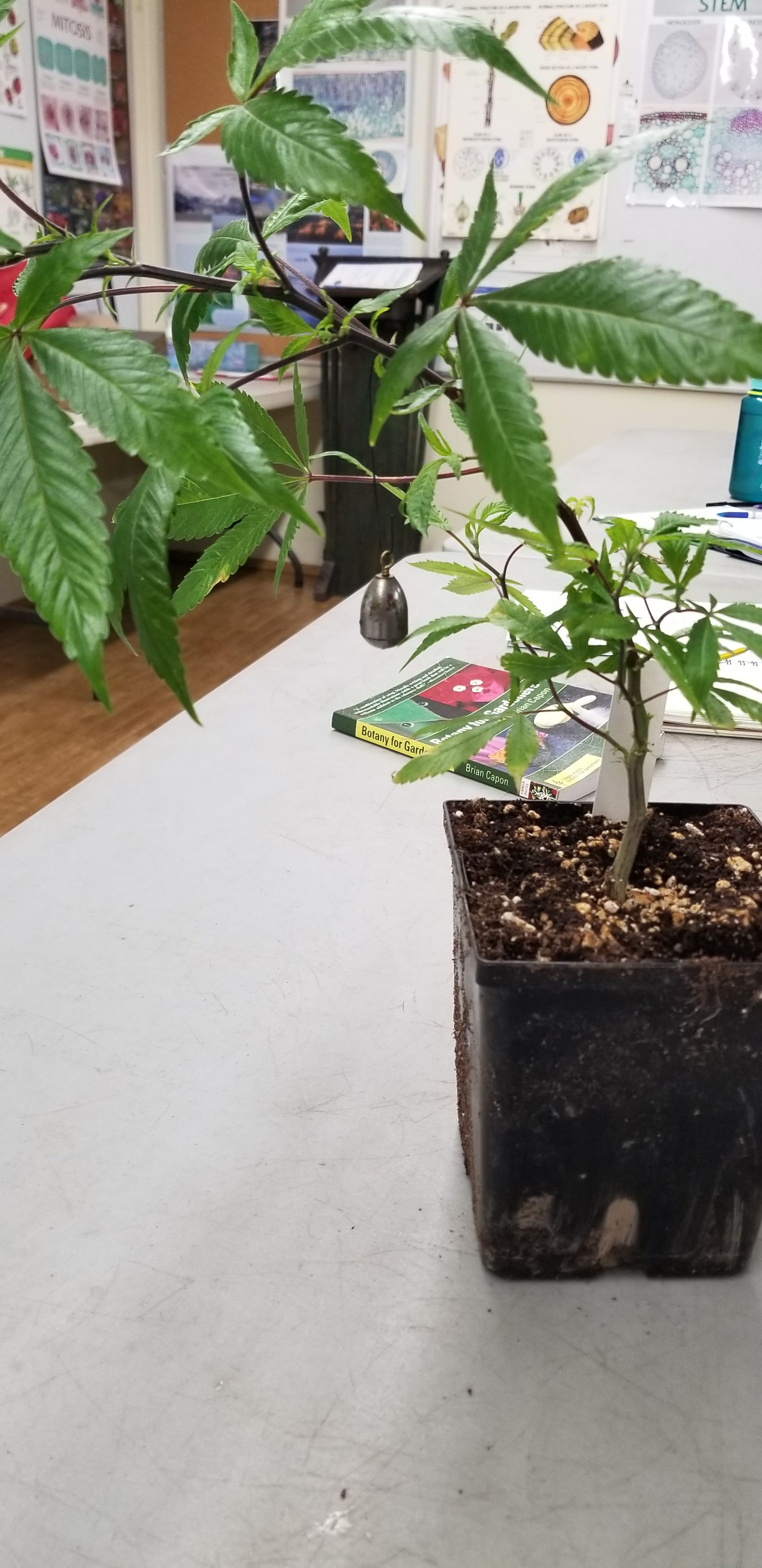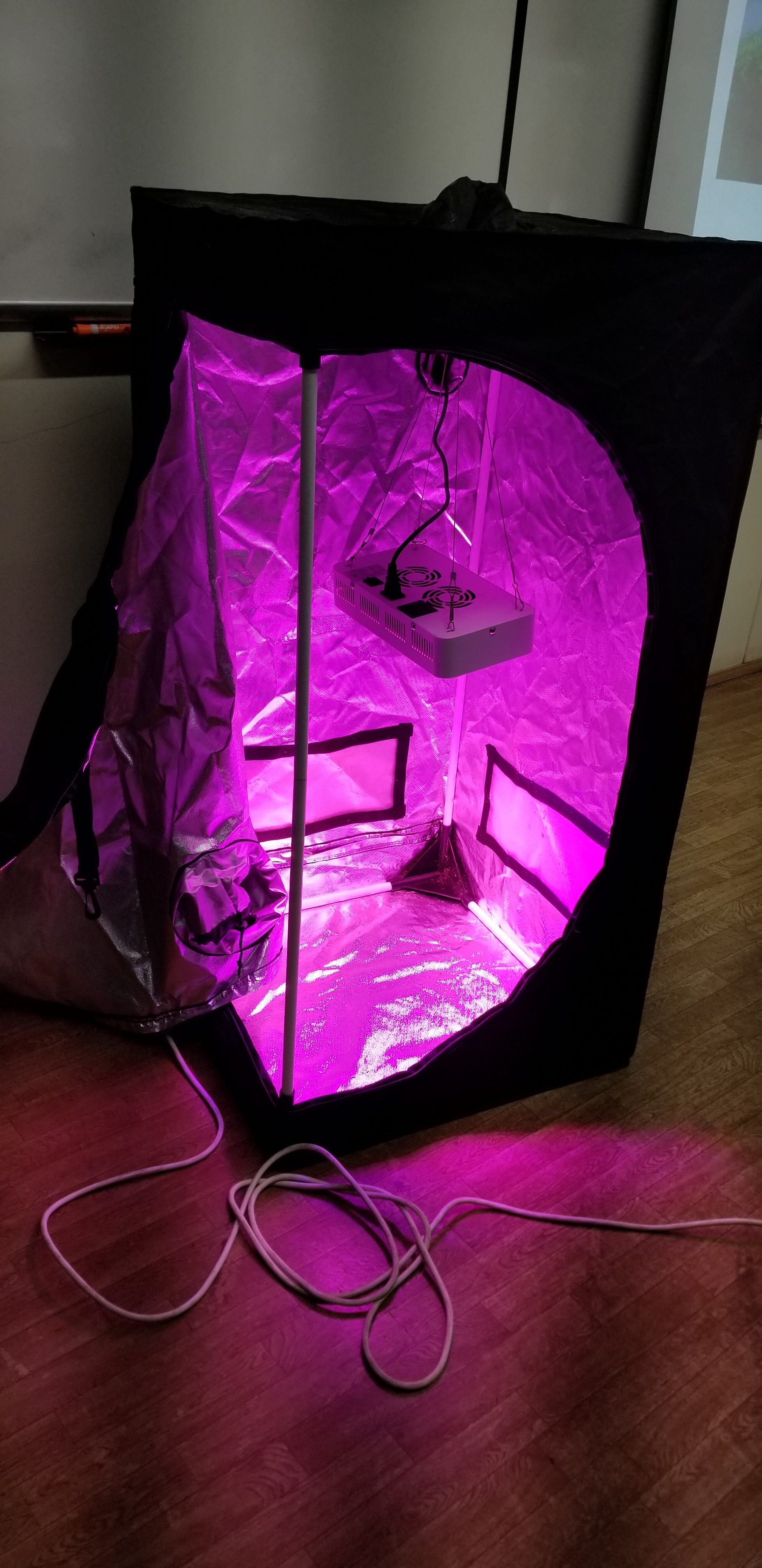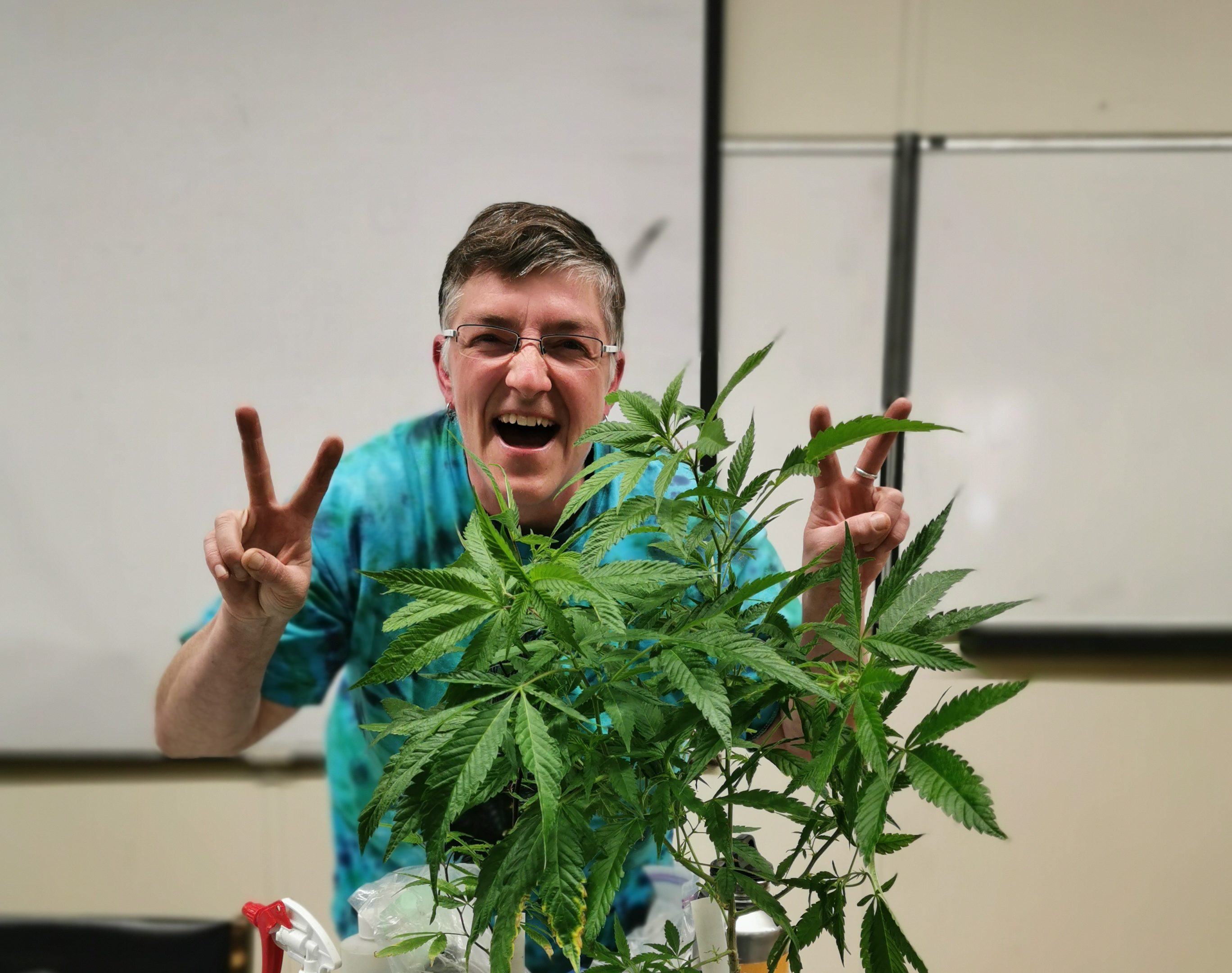Introduction to Cannabis Growing
Thank you to our Pacific Horticulture College students for providing this two part blog sharing what they have learned. To take your own 'Cannabis Basics for the Home Grower' workshop with Jo Wyld visit our event calendar to fin the next available class.
Part 1: Introduction to Cannabis Growing
by: Lindsey Magnus, Pacific Horticulture College Student
 The Cannabis plant, although controversial at times, is an incredibly interesting subject. From its history and uses to growing and cultivating it in your own home, instructor Jo Wyld gave our PHC class an idea of just how amazing this plant really is.
The Cannabis plant, although controversial at times, is an incredibly interesting subject. From its history and uses to growing and cultivating it in your own home, instructor Jo Wyld gave our PHC class an idea of just how amazing this plant really is.
Originating in Central Asia, Cannabis dates as far back as the Stone Age, around 1200BC. Much like now, it was used for its psychoactive and medicinal properties. Hemp, a sub-species of Cannabis sativa and one of the strongest natural fibers in the world, has been used for centuries as building materials, fabric, paper and body care.
It seems not everyone was not a fan of this incredibly versatile plant, and in the early 1930's a negative connotation started forming around it. Anti-marijuana ads became prevalent and a high tax was implemented on the purchase and growing of Cannabis. Marijuana became illegal to prevent the spread of “Reefer Madness” and the war on drugs was declared. Fortunately by the 90's the law had relaxed around marijuana use and by 2018 it was legalized in Canada and parts of the United States.
As fascinating as the history of Cannabis is, the plant itself is just as exciting. Jo explained that there are three species of Cannabis, all with their own medicinal properties and growing preferences. sativa, a tall, narrow and thin plant is best grown out doors and when used medicinally can have an energizing and stimulating effect, great for focus and creativity. Because of these effects it's generally better for day time use. The indica plant grows well indoors due to its short, fat and bushy stature. This stain can be very effective for pain relief, insomnia and inflammation. The third species, ruderalis, is less popular for its medicinal properties, due to its low THC content, but still has its benefits for growing. It is often crossed with other stains because it grows very well in extreme conditions and short seasons. Hybrids are very common these days and finding a landrace stain, 100% indica or sativa, is extremely rare.
Much like the popular craft beer craze, you really can tailor a hybrid stain to your preferred taste, smell and yield. This doesn't, however, mean that growing Cannabis doesn't come with its own set of challenges. Growing indoor or outdoor? Organically or synthetically? There are a lot of factors that go into growing the healthiest plant possible and there are pros and cons to each option. For example, growing indoors allows you to control temperature and ventilation, especially if you use a grow tent, but your plant can be more susceptible to root rot. Outdoor plants have the ability to grow bigger but you could be taking a chance with weather and soil conditions.
Regardless of WHERE you choose to grow, WHAT you choose to grow is just as important. Cannabis plants can be male or female, but only the female plants will produce buds, while male plants are essentially used to pollinate. Unfortunately, you won't know the sex of the plant for 4-6 weeks. Legally you are only allowed to grow 4 plants in your home, so best to get rid of the males as soon as possible.
To begin the process, you will want to soak your seeds in a wet paper towel for 24 hours in a warm dark place. Seedlings will start to develop and move into what's called the vegetative stage where your plant will grow leaves and stems. It is vital during this time that the plant receives 18 – 24 hours of sunlight and an oscillating fan to maintain its strength. Humidity should be around 45% for growing indoors. Soil is very important and Jo recommends a high quality organic fertilizer. Obviously pests and disease can be a huge problem, especially when growing indoors. From fungus-gnats to spider-mites knowing how to eradicate, or better yet, prevent them could be the difference between a huge yield and a lot of work for nothing. Jo even shared with us a homemade recipe for foliar spray.
Properly pruning can be another large factor in your plants development. Stress training is a technique done before your plant starts flowering and can be very effective in producing a bigger yield. You can try low stress-training by creating what's called a “Sea of Green” by simply bending and weighing down the plant to one side allowing the leaves to grow up instead of out. Another way is high stress training. This is when you use techniques like “Fimming”, removing 80% of the growing tip, or “Super Cropping”, folding a stem over to encourage more growth by forming a knuckle. Something I found very interesting was that if you happen to stress the plant too much the female plant can become hermaphroditic in an attempt to pollinate itself for survival.
Depending on what you're growing it could take, indica, 6-10 weeks or sativa, even longer to start to flower. When trichomes, tiny hair-like structures known as the plants resin and which contain the plants THC, become opaque you are ready to harvest. Hanging the plants upside down or placing them on a drying rack is the best way to dry them. This process generally takes about 5 days but a relatively slow dry time will give you the best benefits. You should be able to snap the buds off of the stem, while still being spongy. Curing the buds is the final step. Placing them into a mason jar for at least 2 weeks, opening for 10 mins a day is recommended. A lengthy process but worth it in the end.
This brief introduction to growing Cannabis was very informative and as in depth as the subject can be, Jo did a great job of explaining the important processes of growing, maintaining and harvesting a healthy plant. Jo Wyld's passion and knowledge made this class a fantastic experience.
Part 2: Cannabis Basics for the Home Growers
by: Kaitlyn Mann, Pacific Horticulture College Student
 When I first applied to the Pacific Horticulture College, I cannot say I anticipated on learning how to grow, care for, and process cannabis, yet here I am writing this! We learned such a wealth of information from the very knowledgeable and affable Jo Wyld and we had such a wonderful time doing it. The uses, growing process, and harvesting process of a cannabis plant is extensive but fascinating.
When I first applied to the Pacific Horticulture College, I cannot say I anticipated on learning how to grow, care for, and process cannabis, yet here I am writing this! We learned such a wealth of information from the very knowledgeable and affable Jo Wyld and we had such a wonderful time doing it. The uses, growing process, and harvesting process of a cannabis plant is extensive but fascinating.
Cannabis is the genus while indica, sativa, and ruderalis are the different species under Cannabis. The sativa strand has effects of being uplifting, energetic, and recommended for daytime use. It grows up to sixteen feet tall so it should be grown outside. On the other hand, indica is high in resin, which is good for pain relief, insomnia, and relaxing. It is good for growing indoors as it grows fat and short plants. Both sativa and indica originate from a strand of cannabis called landrace which is now incredibly difficult to find. As well as being for medical use, cannabis has many other uses such as textiles from hemp, personal hygiene products, building materials, and many more!
To grow cannabis from seed, you first must soak the seeds in wet paper towel for twenty-four hours or until a little sprout begins to emerge. Once the seedling begins to develop, it will be in this stage for about two to three weeks, needing eighteen to twenty-four hours of sunlight and an oscillating fan to promote plant strength. At the end of this period, the plant enters what's called the vegetable stage where it can stay for two to eight weeks or even longer. This is the stage right before the plant begins to flower. To be rewarded with a flowering period, the plant needs sixty days of humidity that sits around 60-80%. Air circulation is vital throughout its life to keep the plant happy.
When harvesting cannabis, it's important to pay attention to the trichomes on the female flower. Trichomes are little hairs that sit on plant leaves that are present to deter pests from taking a nibble, protect against fungi, and protect against the elements. In cannabis plants, the trichomes hold the THC and the CBD oil which is essentially what one would be looking to have for recreational or medical use. When the female flower is nearing harvest, it will turn a rusty brown colour and the trichomes will be opaque. The flowers can then be cut and hung to dry at a humidity of 50% or less but not too dry because the slower it dries, the better the cannabis will be. You can also cut the buds individually and put them in a tiered herb drying rack. The drying process takes about one to two weeks. To check if they're ready, you bend the stem and if it readily snaps, it's time for the curing process. This involves placing the buds in a mason jar and opening the jar for ten minutes once a day for two weeks. Then finally, you have home grown bud!
The opportunity to be educated by Jo Wyld was an experience not soon to be forgotten. The Pacific Horticulture College has been phenomenal in its diversity of instructors that present such passionate learning spaces and willingness to pass on their plant wisdom to us saplings. If anyone is at all interested in the hobby of cannabis, then Jo Wyld's class is a must!

